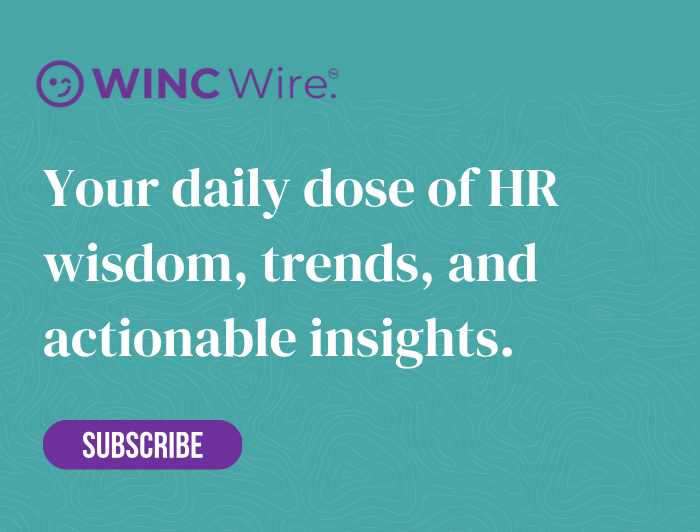Let’s be direct, shall we?
The way we manage people has to keep pace with the sheer speed of workplace change. This isn’t about small tweaks; it’s about fundamental, strategic shifts. And sitting right at the heart of this transformation is an asset many organisations still misunderstand: the Human Resources Information System (HRIS).
Think of it as far more than a digital filing cabinet. When you put an HRIS to work with real strategic intent, it becomes the very foundation for operational precision, genuinely improving how your people feel about their work and, crucially, freeing you and your team from that administrative quicksand we all know so well.
But here’s the thing. Technology, just like our best people, only delivers real value when it’s nurtured properly. So, how do we make an HRIS actually work for us, instead of it becoming just another expensive tool gathering digital dust?
From Daily Chaos to Strategic Clarity: Why Your HRIS Matters More Than Ever
At WINC HR, we’ve seen our fair share of turbulent times alongside our partners. Many are making tough calls right now: trimming headcount, asking teams to stretch further, and constantly re-evaluating priorities in deeply unpredictable markets. It’s in these moments, where resilience has to be paired with reform, that a robust HRIS stops being a ‘nice-to-have’ and becomes an absolute lifeline.
A well-implemented HRIS doesn’t just organise your data; it empowers you. It provides the insight needed to shift from reactive firefighting to proactive, strategic foresight. But getting there requires real clarity and commitment from the outset.
Mapping the Rollout: The Four Essential Phases of a Successful HRIS Project
Like any project that’s genuinely meant to be transformative, bringing in a new HRIS needs structure and rigour. Here’s the path we guide our partners along:
1. Defining What You Actually Need (The RFP Stage)
Before you even think about vendors, you need to identify what really matters. Don’t just talk to your HR team; get in a room with IT, finance and operations. This isn’t just an HR system; it’s a new backbone for the entire business.
Remember, your stakeholders often don’t know what modern systems can do. Your first job is to educate them, then gather their input. Your Request for Proposal shouldn’t be a random wish list; it should be a clear blueprint for what the business needs to become more agile.
2. Choosing the Right Vendor Partner
This is where context is everything. The needs of a 75-person team experiencing steady growth are worlds away from a tech scale-up that’s projecting 300% headcount growth in two years.
Smaller organisations might be perfectly served by a nimble, cloud-first solution. Larger, more complex enterprises will likely need custom integrations and proven scalability. The key is to choose with the future in mind, not just the headaches you’re trying to solve today.
3. Scoping the Implementation (and Being Realistic)
Please, don’t try to boil the ocean. Anchor your initial scope around the core pillars that will give you the biggest wins first:
- Your core workforce data and reporting
- Benefits and payroll administration
- Performance conversations and time tracking
- Essential compliance and documentation
Next, take a long, hard look at your internal capacity. If your IT and project teams are already stretched to their limits, bringing in external implementation partners can be the difference between a seamless integration and a stressful, drawn-out failure.
4. The Build, Test and Launch Phase
This is where the strategy document becomes a living, breathing reality. You’ll need a strong project management office (PMO), disciplined weekly stand-ups, and a process that ensures every function has its voice heard during the configuration.
Treat this phase like tuning a high-performance engine; it requires meticulous attention, true collaboration, and an eye for longevity. The real victory isn’t the ‘go-live’ day, but what happens next when you start unlocking features that will evolve alongside your workforce.
Beyond the Build: Your HRIS as a True Strategic Tool
Look, getting the technology implemented is only half the story. The real transformation begins when the system is woven into the very fabric of how your organisation thinks, moves and grows.
This is where a modern HRIS proves its worth:
• Recruitment & Onboarding That People Remember
Today’s Applicant Tracking Systems (ATS) do so much more than just shortlist CVs. They can handle everything from automated interview scheduling to personalised onboarding workflows, creating a smooth and impressive journey from first contact to first day. That’s a critical edge in a competitive talent market.
• Tackling Performance & Engagement Head-On
What’s a common root cause of disengagement? The dreaded feedback vacuum. Modern performance management systems can change this by embedding continuous feedback loops, peer-to-peer recognition, and tailored development paths. This helps turn the stale annual review into a dynamic engine for real-time growth.
• Enabling Effective Remote & Hybrid Work
Tools like Teams and Zoom have changed our perception of proximity, but an HRIS bridges the operational gap. It helps you properly manage distributed teams, reassign resources with agility, and confidently attract talent from anywhere in the world.
• Making Decisions with Data, Not Just Gut Feel
From instant demographic snapshots to predictive attrition modelling, a good HR system gives you real-time visibility into your most valuable asset: your people. This means smarter workforce planning, lower staff turnover, and fairer, more equitable career progression.
• Managing Compliance & Documentation Without the Headache
Our role as custodians of compliance is absolutely non-negotiable. A strong HRIS ensures documentation is clear and traceable, new regulations are visible, and data privacy is safeguarded, all while automating much of the backend administrative burden.
From System to Strategy: How to Make It Stick
Let’s not pretend any of this is easy. Implementing a new HRIS will seriously test your organisation’s alignment, its capacity for change, and its overall project appetite. But every single challenge you overcome is a step towards building a more agile, resilient and empowered organisation.
Ultimately, the goal isn’t just automation for its own sake; it’s about transformation. It’s not about just installing a piece of software, but about embedding a system that grows and adapts with your people, your values, and your business strategy.
At WINC HR, our philosophy is to walk alongside our partners on this journey, from that first RFP to the ongoing optimisation long after launch. Because we’ve learnt over many years that it’s never the system that drives success. It’s always the people behind it.
Let’s build something better, together.






